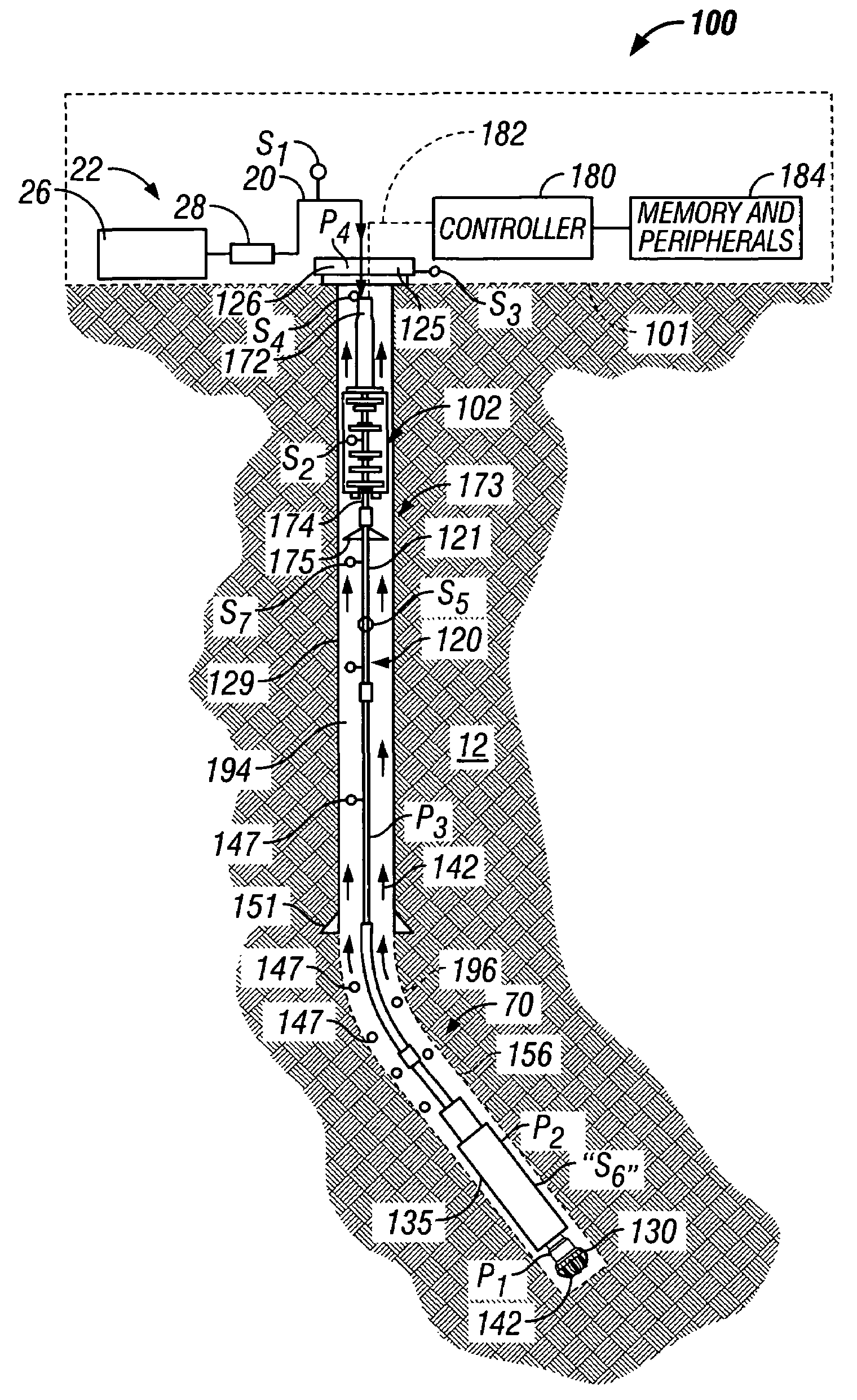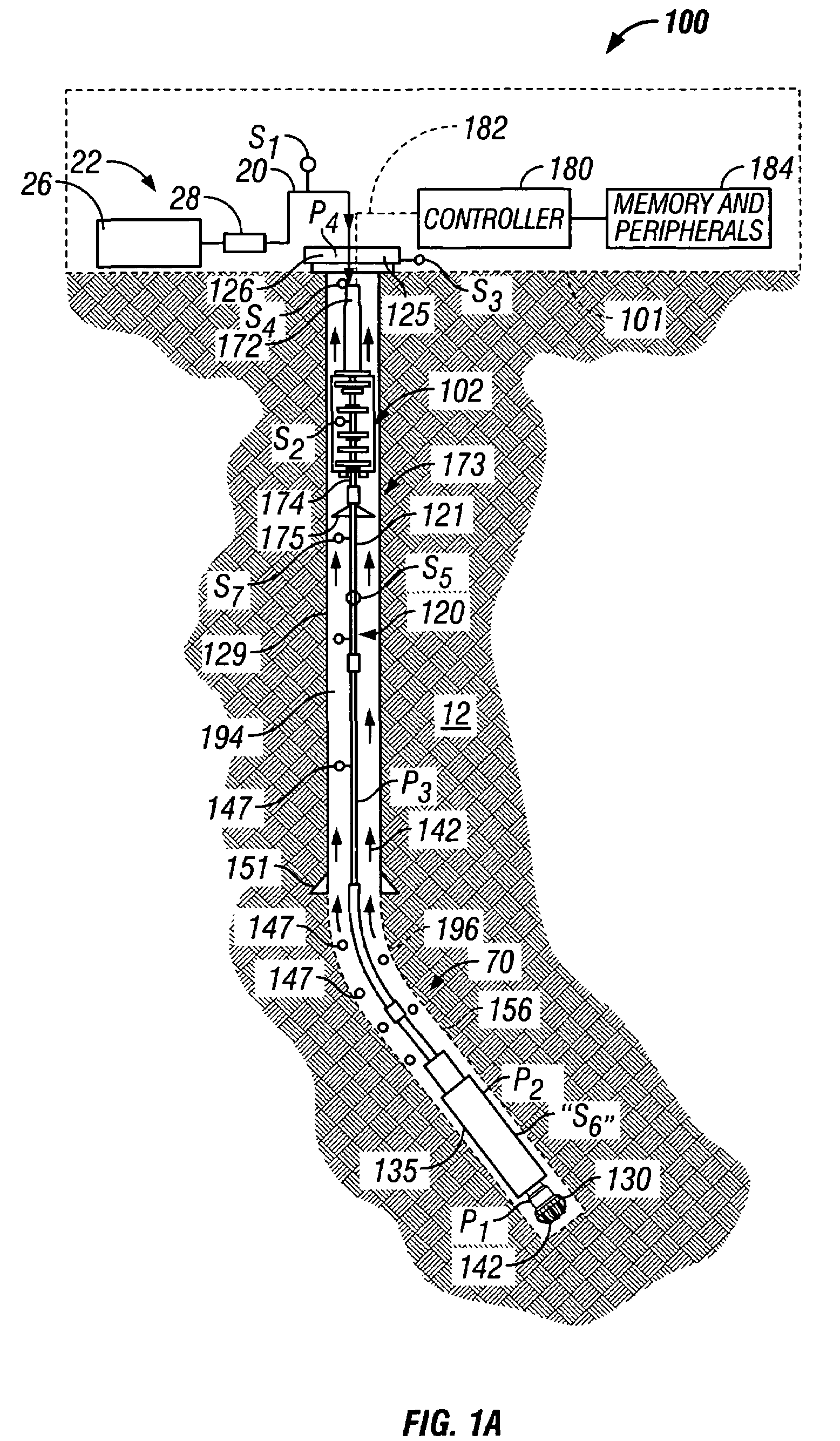Active controlled bottomhole pressure system & method
- Summary
- Abstract
- Description
- Claims
- Application Information
AI Technical Summary
Benefits of technology
Problems solved by technology
Method used
Image
Examples
Embodiment Construction
[0029]Referring initially to FIG. 1A, there is schematically illustrated a system for performing one or more operations related to the construction, logging, completion or work-over of a hydrocarbon producing well. In particular, FIG. 1A shows a schematic elevation view of one embodiment of a wellbore drilling system 100 for drilling wellbore 90 using conventional drilling fluid circulation. The drilling system 100 is a rig for land wells and includes a drilling platform 101, which may be a drill ship or another suitable surface workstation such as a floating platform or a semi-submersible for offshore wells. For offshore operations, additional known equipment such as a riser and subsea wellhead will typically be used. To drill a wellbore 90, well control equipment 125 (also referred to as the wellhead equipment) is placed above the wellbore 90. The wellhead equipment 125 includes a blow-out-preventer stack 126 and a lubricator (not shown) with its associated flow control.
[0030]This...
PUM
 Login to View More
Login to View More Abstract
Description
Claims
Application Information
 Login to View More
Login to View More - Generate Ideas
- Intellectual Property
- Life Sciences
- Materials
- Tech Scout
- Unparalleled Data Quality
- Higher Quality Content
- 60% Fewer Hallucinations
Browse by: Latest US Patents, China's latest patents, Technical Efficacy Thesaurus, Application Domain, Technology Topic, Popular Technical Reports.
© 2025 PatSnap. All rights reserved.Legal|Privacy policy|Modern Slavery Act Transparency Statement|Sitemap|About US| Contact US: help@patsnap.com



